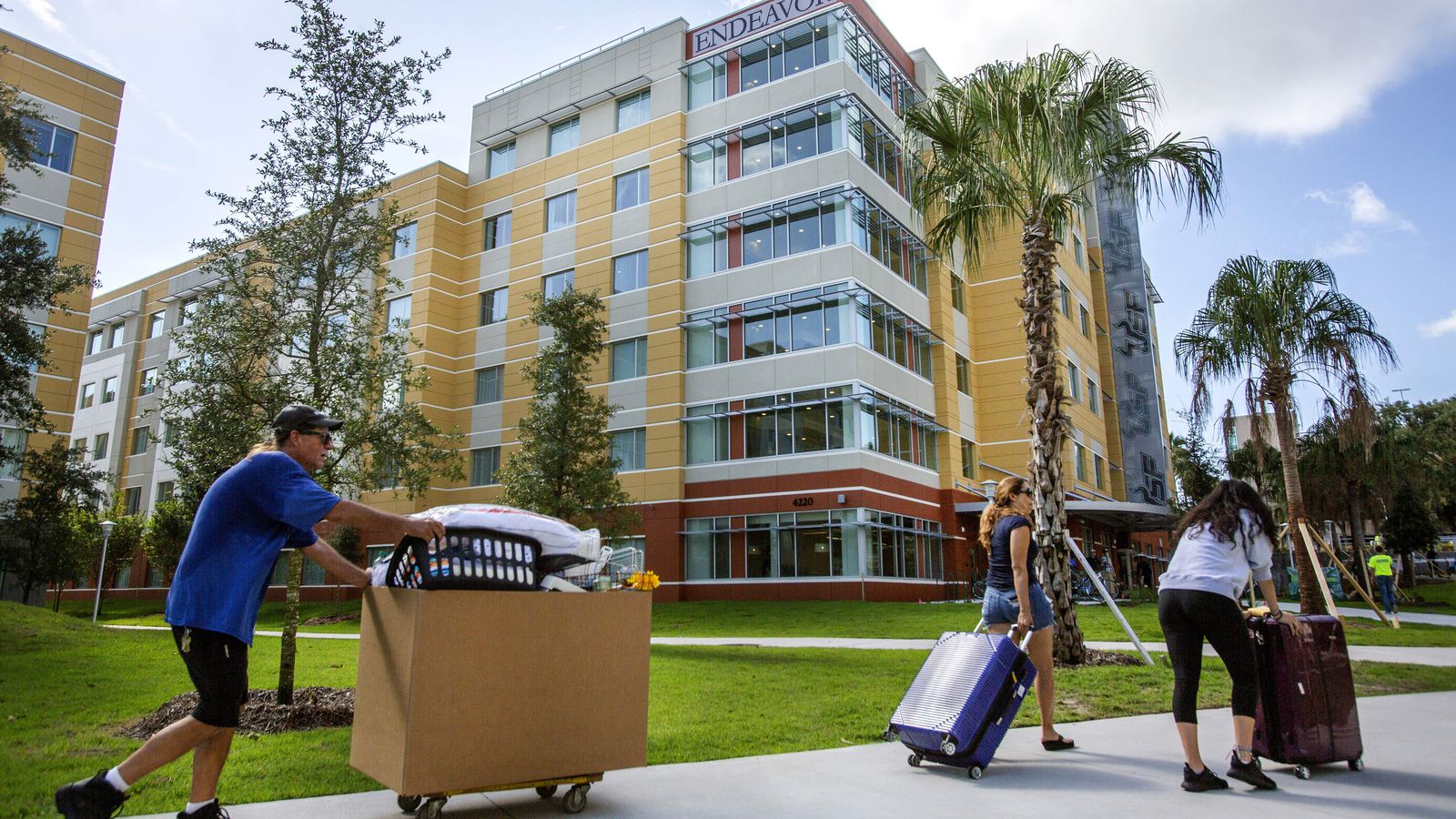‘Safer-at-home’ order to determine future move-out dates for residential students

Gov. Ron DeSantis’ “safer-at-home” order is set to expire Thursday. If all goes as planned, then over 4,000 USF students might be looking at a mid-May return to campus to retrieve their belongings from their dorms.
The order halted the original May 8 move-out plans, resulting in USF’s Housing and Residential Education (HRE) rescinding the move-out dates.
“If that [date] stands and is not extended, then we will begin our move-out process and begin setting up appointments for students to return, probably in the middle of May,” Assistant Vice President of HRE Ana Hernandez said.
Executive Order 20-91, which established the safer-at-home policy, could be extended beyond the initial expiration date, depending on the circumstances surrounding the COVID-19 pandemic.
“For those students who are still off campus, which is a significant number of people, we are waiting for any update on Governor DeSantis’ executive order, which is currently set to expire on April 30,” Hernandez said.
The plan for these students is similar to the original move-out plans offered in late March, according to Hernandez. The goal is to maintain the Centers for Disease Control and Prevention’s (CDC) recommendations while expediting move-out procedures.
“We would be identifying specific populations and buildings, based on location, and we would offer 10 residents [per building] the opportunity to move out of a building per two-hour time slot during the day,” Hernandez said.
“We’d allow up to two individuals to come and assist the student with the move. We would then turn their card access on for that two-hour time period that they were permitted to be in the building.”
Students may want to consider bringing additional people to help them move out this semester, especially since housing staff won’t be providing assistance this year.
“Staff are very limited because our 24-hour desks are still closed,” Hernandez said. “So we’ve implemented an express checkout, where students will just need to deposit their keys in an envelope with their names and room number on it.”
The order in which students will move out is determined by multiple factors, including the location of buildings to cut down on crowds.
“It’s going to be based on the location of the building, whether we need to use the building for the summer,” Hernandez said. “We are looking right now on perhaps doing Florida residents versus out-of-state [residents] in different groups and we’re also looking at where the clusters of buildings are so that we determine where individuals may park to do the move outs.”
For students who might not be able to return to campus, Hernandez said that HRE will reach out once the move-out period has ended to see what options the university can provide for them.
Hernandez said that the roughly 370 students who were granted an exception to stay on campus — due to not being able to return home — will move out on the “traditional move-out day.”
“Unless they are looking to remain on campus for the summer, their move out will be our traditional move-out day, which is May 8,” Hernandez said. “Some may finish their finals early and then they will go about moving out just like they would in a traditional year.”
As the end of both the spring semester and the safer-at-home order approaches, Hernandez said she understands the need to pick up belongings, but the health of students will be a top priority.
“We’re trying our best to allow people to retrieve their belongings because we know that it’s important to them while we keep the community safe, and so we appreciate everybody’s ongoing patience,” Hernandez said.







